How Easily Could You Shoot a Ghost in the Face? The Bizarre Case of the Hammersmith Ghost Part 2
Let's begin with a quick summary of events so far:
1803, a ghost is haunting the graveyards and lanes of Hammersmith, London. Eyewitnesses that didn't die of fright all described the spectre as being tall and white. Two lives had already been lost, one of a pregnant young lady and one of an old lady. Both seemingly died of fright at the encounter. What few police there were in the area were at a loss for what to do.
Eyewitness reports kept pouring in, and while most stuck to the tall, white description, others got a little bit more...creative. Some claimed the ghost had horns, glass eyes, and even hoofed feet. As people became more and more scared, they started to look elsewhere for protection, and formed vigilante groups to patrol the streets.
One Thomas Groom, servant of a bartender, and owner of balls of steel, decided to take an evening stroll through the now-famously haunted graveyard. The cold winter air his only company, he walked down the path between the gravestones, presumably so haplessly oblivious to stories of ghostly activities that he was whistling a jaunty tune as he went. Suddenly, he felt it. A malevolent arm, white as a Shrewsbury cloud, had seized his neck.
(Please note there is no clear recorded account of exactly how this encounter went down, so using my knowledge of the era, I'm going to fill in the gaps as accurately as possible for this next scene)
The arm squeezed his neck, tighter and tighter, restricting airflow as he thought desperately about his bad choice of shortcut. But momma apparently didn't raise no fool. Groom, elbowed the assailant, before using judo-like moves to flip the considerably taller ghost over his head, slamming it down onto the frosted ground. "Looks like you've hit rock bottom" he quipped, standing over the ghost. But his overconfidence was also his greatest weakness, for the ghost had spun on the ground, sweeping Groom's legs from beneath him, whilst simultaneously backflipping back onto his feet, his arms apart and ready to counter.
Groom grabbed a tombstone, and swung it wildly at the ghost, but the ghost teleported behind him and whispered "nothing personal". At that moment, a friend of Groom's appeared and was like "yo what up!" causing the ghost to turn tail and run, Groom hot on its heels, running behindit yelling "Damn you spectre, come back to face judgement!" but the ghost was too fast. It turned back and smiled, before vanishing behind a mausoleum, not unlike Pierre from the first Tomb Raider.
Groom's encounter with the ghost was one of a handful that got physical. Those who tussled with the ghost would go on to describe it as wearing a bulky coat. But shortly after this encounter, things took a dark turn.
Two things happened on the same day. One Thomas Millwood, a 32 year old plasterer, and apparent fan of white clothing, decided to take his new all-white ensemble for a twirl. In public. At night. At a time when everyone was hunting a ghost. His wife had reportedly begged him not to go outside wearing such apparel, for she was aware of the ghost, but dang it, Millwood was of the opinion that if he wanted to wear all white, he'd wear all white. And so off he went.
His wife would later testify that:
On Saturday evening, he and I were at home, for he lived with me; he said he had frightened two ladies and a gentleman who were coming along the terrace in a carriage, for that the man said, he dared to say there goes the ghost; that he said he was no more a ghost than he was, and asked him, using a bad word, did he want a punch of the head; I begged of him to change his dress; Thomas, says I, as there is a piece of work about the ghost, and your cloaths look white, pray do put on your great coat, that you may not run any danger; I don't know what answer he made; he said he wished the ghost was catched, or something of that sort.
Source - this transcript of the court proceedings, by the way, is incredible and well worth a read!
Somewhere not too far away, Francis Smith, a man of upstanding character and hero-for-fun had just joined a ghost-capturing vigilante group, and was patrolling the streets with his sweet new gun. In the distance, he saw a man in all white clothing, and like any other rational man, assumed he was gonna get the shit haunted out of him. Pointing his gun he exclaimed "Damn you; who are you and what are you? Damn you, I'll shoot you!"
Thomas Millwood had already shown his wife earlier that he wasn't the kind of man to be told what to do, so he stood there, still as a ghost. Francis Smith, sadly was not the kind of man to ask twice - or indeed use rational thought before discharging a firearm - and so he shot a bullet straight through Millwood's jaw, killing him instantly. Smith apparently then stood around, agitated and flustered, until eventually, a constable showed up and took him into custody.
The case received a ton of publicity, as one might expect - a man had just been shot in the face in the street for the crime of wearing too much white. It was this publicity that spurred John Graham to come forward and admit to being the real ghost. Turns out that he was pissed off that his apprentice had been telling his grandchildren ghost stories, and he decided to frighten him by dressing up in a sheet and scaring people. There is no record of him being punished for his actions, probably because dressing up as a ghost isn't actually an offense.
Legal Ramifications
The ensuing case had a massive impact on British law. It brought forth a question that wasn't definitively answered in legal proceedings for almost 200 years: How can it be determined whether Smith acted in genuine self-defense, thus rendering him innocent of murder, or if he was using it as an excuse for what was clearly cold-blooded murder? The judge initially sentenced him to death, stating that regardless of whether Smith believed Millwood to be the ghost, he had still not been sufficiently threatened, and took very little time before firing the fatal shot. This was later reduced to one year of hard labor.
A legal ruling on this was finally decided in 1983, for a different case in which a man witnessed another man attacking a youth. He sprang to the aid of the child, assaulting the assailant. Turns out the assailant was actually a police officer, and the youth had just committed a mugging. Welp.
The law eventually ruled in favour of the defendant, stating:
In a case of self-defence, where self-defence or the prevention of crime is concerned, if the jury come to the conclusion that the defendant believed, or may have believed, that he was being attacked or that a crime was being committed, and that force was necessary to protect himself or to prevent the crime, then the prosecution have not proved their case. If, however, the defendant’s alleged belief was mistaken and if the mistake was an unreasonable one, that may be a powerful reason for coming to the conclusion that the belief was not honestly held and should be rejected. Even if the jury come to the conclusion that the mistake was an unreasonable one, if the defendant may genuinely have been labouring under it, he is entitled to rely on it.’
You might think that the end of the whole affair, but not quite. Sightings of the ghost actually continued, well into the 1820s, until Spring-heeled Jack took over as the new vogue mystery.
furthermore, the pub that Millwood's body was taken to has had many ghostly sightings. It would seem that he was destined to become the Hammersmith ghost after all.
But why did Francis Smith Shoot?
Now for a little psychology. The thing that drives me crazy about this whole story is that Francis had little problem with straight up blowing a hole in another man's head, just because he was wearing white. It's not like Millwood had white skin and was running around going 'woooooooo'. At the time, phsychoanalysis wasn't even a glint in 'freud's great, great grandfather's eye, so we need to take a look from a retrospective lens.
We can begin by considering the lack of police enforement.
England in the 18th century had no public officials corresponding to either police or district attorneys. Constables were unpaid and played only a minor role in law enforcement. A victim of crime who wanted a constable to undertake any substantial effort in order to apprehend the perpetrator was expected to pay the expenses of doing so. Attempts to create public prosecutors failed in 1855 and again in 1871; when the office of Director of Public Prosecution was finally established in 1879, its responsibilities were very much less than those of an American district attorney, now or then. In 18th century England a system of professional police and prosecutors, government paid and appointed, was viewed as potentially tyranical and, worse still, French.
source
We already had some idea of this from the story, what with the homegrown ghostbusters that Smith was a part of, and this probably went some way in causing the blurred line between murder and self defense that was so problematic for the British courts. If there was noone to enforce the law back then, does it not make sense that Smith would choose to shoot, assuming that the ghost was A. An evil spectre from beyond the grave or B. Some guy who was grabbing people in graveyards and had caused the death of two people?
There is also the question of how clearly Smith could see Millwood. We might assume that it was clearly a man wearing white, but in the 1800s streetlights were little more than candles and torches, similar to what was used in roman times. Gas lights were introduced just three years later in 1807 but there were only 13 of them and they were only in London proper.
But even with low lighting, and a - sort of - reason to believe that his life was in some kind of danger, can we really justify Smith shooting at what he believed was a ghost? still somewhat outragous right? The early 1800s were a weird time. The enlightenment was in full swing, and people were starting to shake themselves free of the religious dogma that had previously shackled them into behaving for fear of hell. But the rationalism movement was mainly of concern for academics and intellectuals, so it's unknown to what extent it reached men like Smith, who was apparantly willing to risk a trip to hell by shooting another man.
It is well documented that humans are easily able to rationalize shooting another human through a process of dehumanization. If you are able to view your adversary as less than human, it becomes easier to take their life. In their essay Dehumanizing the Enemy: The Intersection of Neuroethics and Military Ethics, Shannon E. French states:
authority and dehumanization can combine to create an alarming willingness for individuals to harm others, even when they face no immediate danger to themselves...
and later
Our research demonstrates that there is a fundamental tension between the brain areas that we use to understand the experiential viewpoint of others and the brain areas we use for emotionally disengaged analytic thinking, focused visual attention, and motor planning. In general, when we
turn on one of these networks of brain regions, then we suppress activity in the other. The mutually antagonistic relationship between these networks is a fundamental feature of the human brain – it is a very marked neurophysiological effect involving much of the human cortex, and it was observed long before we understood its cognitive significance.
This contridiction between different parts of the brain is considered to be a carry over from evolution. Early man was more concerned with survival than empathy. We can probably safely assume that the empathy that developed is what allowed us to be able to function as a society eventually, although even today it can't be hard to detect such empathy in several facets of the human condition.
I would venture that the authority bestowed upon Smith by his roving vigilante gang, combined with his determination to kill the ghost would have allowed Smith to lean towards the analytical side of his brain, supressing the part that handles empathy towards his opponent. By dehumanizing Millwood, he was able to pull the trigger. I believe that the evidence of this is how little time he repordately gave Millwood to respond before shooting.
This dehumanizing mob mentality was probably also fueled by fear. Fear is a powerful motivator, one that can cause us to do things and act in ways that we normally wouldn't. This can be both positive and negative Take this study for example:
After the bombing in London in 2005 a study was carried out to investigate if the increased amount of fear which was related to the bombing, has an impact on the performance of participants when solving conditional reasoning tasks that were related in content to the bombing (Blanchette et al., 2007). It resulted that fearful participants provided more correct responses on a reasoning task with fear-related content than participants that did not report a high level of fear.
Source
In this case, fear motivated the participants to focus and correctly respond with reasoning than those who didn't show elevated levels of anxiety. while from a rational viewpoint, it would be hard to consider Smith's response to the situation to be rational, that is partly because we are fortunate enough to live in a world that has largely replaced superstition and unease surrounding the paranormal.
But ghosts were far more widely believed in during the 18th and 19th century. In spite of the emergance of rationalism, superstition was rife in both England and abroad. Famously, America was super into hunting out and burning witched during the Salem Witch Trials. But back in England, ghosts were far more popular. To quote Samuel Johnson "It is wonderful that five thousand years have now elapsed since the creation of the world, and still it is undecided whether or not there has ever been an instance of the spirit of any person appearing after death. All argument is against it; but all belief is for it."
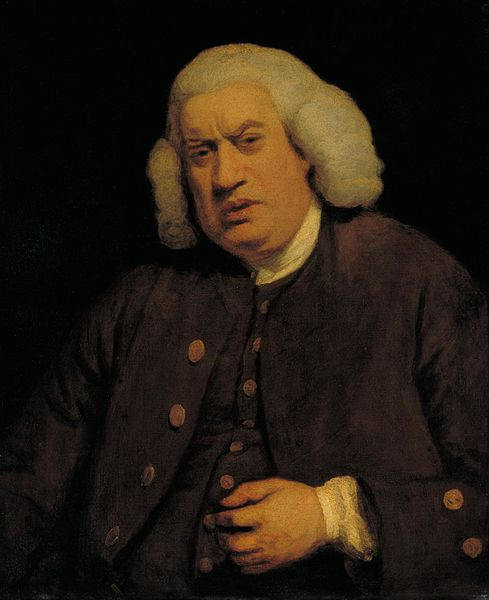
yep, this guy Source: Wikimedia Commons
So all together, it's easy to see why shooting poor old Millwood could have seemed like the right thing to do in the moment, and it also shows just why the idea of self defense is so hard to prove in a court of law - how can we really prove that someone genuinely believes themselves to be in danger, especially when rational thought varies from person to person?
But for now that's all. This has gone on far longer than planned and my fingers are tired. Hope you enjoyed this story. I certainly did.
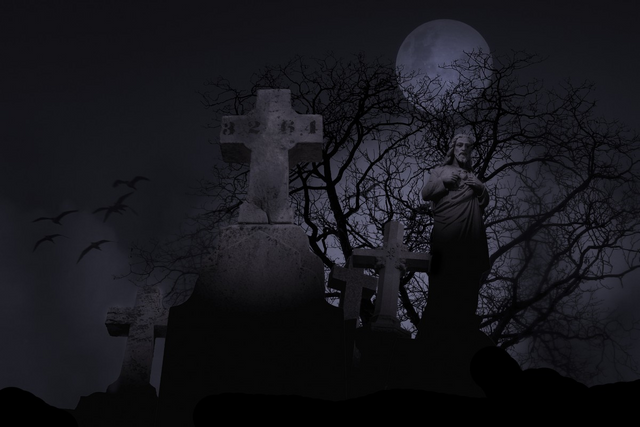
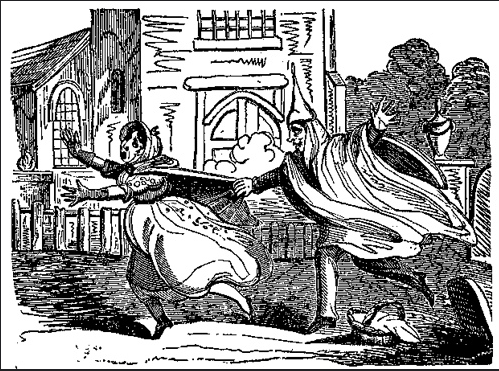
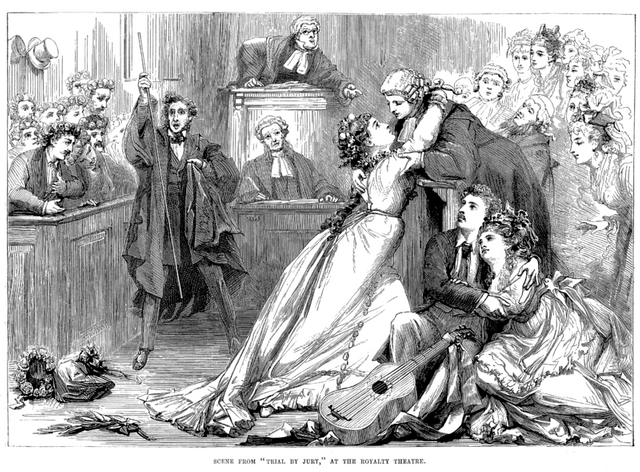
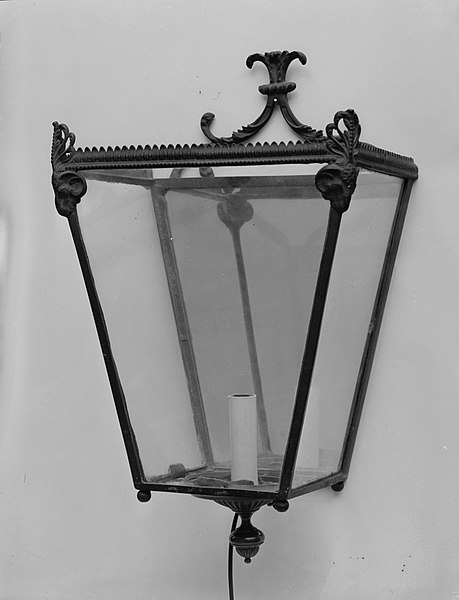
Reaching the epitome of justice is extremely difficult, as both parties can have their logical reasons, and then we start to tap into each other's moral compass, and ethical values.
Congratulations @deathbatter! You have completed the following achievement on Steemit and have been rewarded with new badge(s) :
Click on the badge to view your Board of Honor.
If you no longer want to receive notifications, reply to this comment with the word
STOPHi @deathbatter!
Your post was upvoted by utopian.io in cooperation with steemstem - supporting knowledge, innovation and technological advancement on the Steem Blockchain.
Contribute to Open Source with utopian.io
Learn how to contribute on our website and join the new open source economy.
Want to chat? Join the Utopian Community on Discord https://discord.gg/h52nFrV
Refreshing read! This is also why propaganda works like magic. Once humans feel like they are threatened by some greater foreign evil, distant relatives suddenly become savage aliens and the pitchforks come strait out. I could never kill...or could I?
To listen to the audio version of this article click on the play image.

Brought to you by @tts. If you find it useful please consider upvoting this reply.
This post has been voted on by the steemstem curation team and voting trail.
There is more to SteemSTEM than just writing posts, check here for some more tips on being a community member. You can also join our discord here to get to know the rest of the community!
Congratulations @deathbatter! You have completed the following achievement on Steemit and have been rewarded with new badge(s) :
Click on the badge to view your Board of Honor.
If you no longer want to receive notifications, reply to this comment with the word
STOPCongratulations @deathbatter! You have completed the following achievement on Steemit and have been rewarded with new badge(s) :
Click on the badge to view your Board of Honor.
If you no longer want to receive notifications, reply to this comment with the word
STOPCongratulations @deathbatter! You have completed the following achievement on Steemit and have been rewarded with new badge(s) :
Click on the badge to view your Board of Honor.
If you no longer want to receive notifications, reply to this comment with the word
STOP